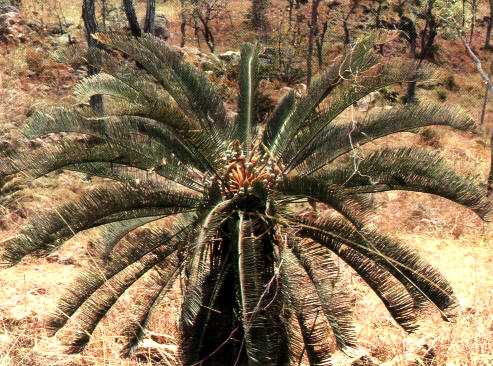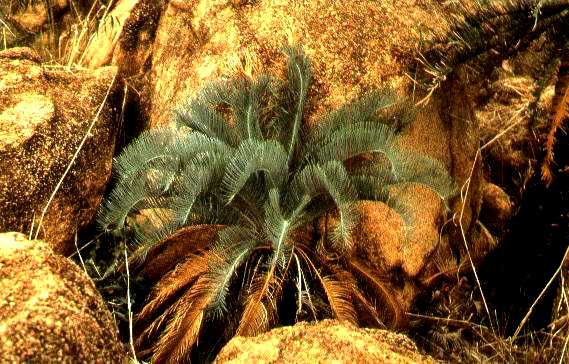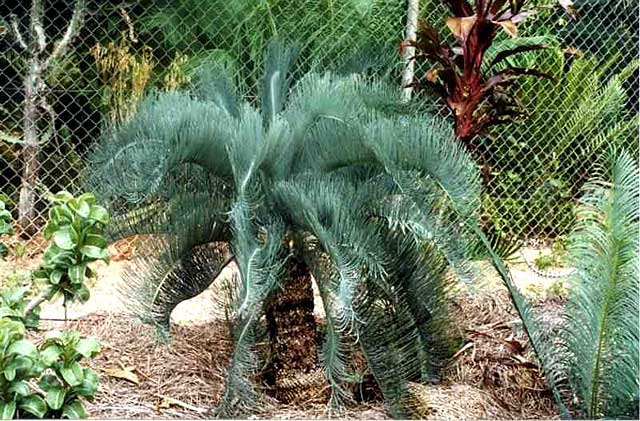Cycas cairnsiana
From PACSOA Wiki
| Welcome to the PACSOA Palms and Cycads wiki!
If you have any information about this species, please help by updating this article. Once you are registered you can contribute, change, or correct the text, and even add photos on this page. Click on the edit tab above and play around. Any mistake can be easily corrected, so don't be afraid. |
Common Names:
Cycas sp. 'Mt Surprise',
Cycas sp. 'Champions Blue Surprise'
Distribution & Habitat:
The Newcastle Range, in north-east Queensland.
Habitat is open woodland amongst granite outcrops; decomposed
granite soil.
===Description:===
Cycas cairnsiana is listed by David Jones (1981) as 1 to 5m tall, and in some areas this could well be. However, observations around Petford, Chillagoe and again at Dimbulah, describe the plants up to 2m only, with quite a stout caudex, swelling toward the base. Heavy crowns of glaucous blue fronds arching bow like from the apex of the caudex. The pinnae forming a deep vee along the length of the rachis. The leaf coloration persists on both surfaces, and the naked petiole below the pinnae having small teeth. Leaf fronds in plants were 1.5m, but in very large specimens not at present seen but often reported, could easily reach 2m long. Male cones were 20cm long, ovoid, and golden brown. Female simple cones, initially ferruginous, pubescent and with a narrow petiole terminating in a small toothed head. Ovules two to a megasporophyll. These are green at first, then blue green and when finally pendant, a shiny brown. When the new centre fronds arise, they are a light blue uncoiling from a rusty coloured rachis, and are quite eye catching.
This plant has strong recurving margins on all the pinnules. Being not nearly as frost tender as others of its kind across the Top End, this should respond well to cultivation in cooler areas. This statement is made regrettably as in this country cultivation for landscaping projects could well be our only means to save them from eventual extinction.
General:
These Cycas often grow in between or beside some very large granite boulders and outcrops. They have only been observed in colonies and never as scattered individuals which is the habit of many of the tree species of this fossicking area which extends in various directions for about 10km. Seed distribution is probably the influencing factor here as there is no obvious difference between sites where they occur and those where they do not.
Culture:
Requires a hot, dry, very well drained position. Frost tolerant, but dislikes high humidity. Very slow.
Contributed by:
Len Butt (Text and Figure 1)
I.G. Champion (Figures 2&3)
Gary Beaumont (Figure 4)




